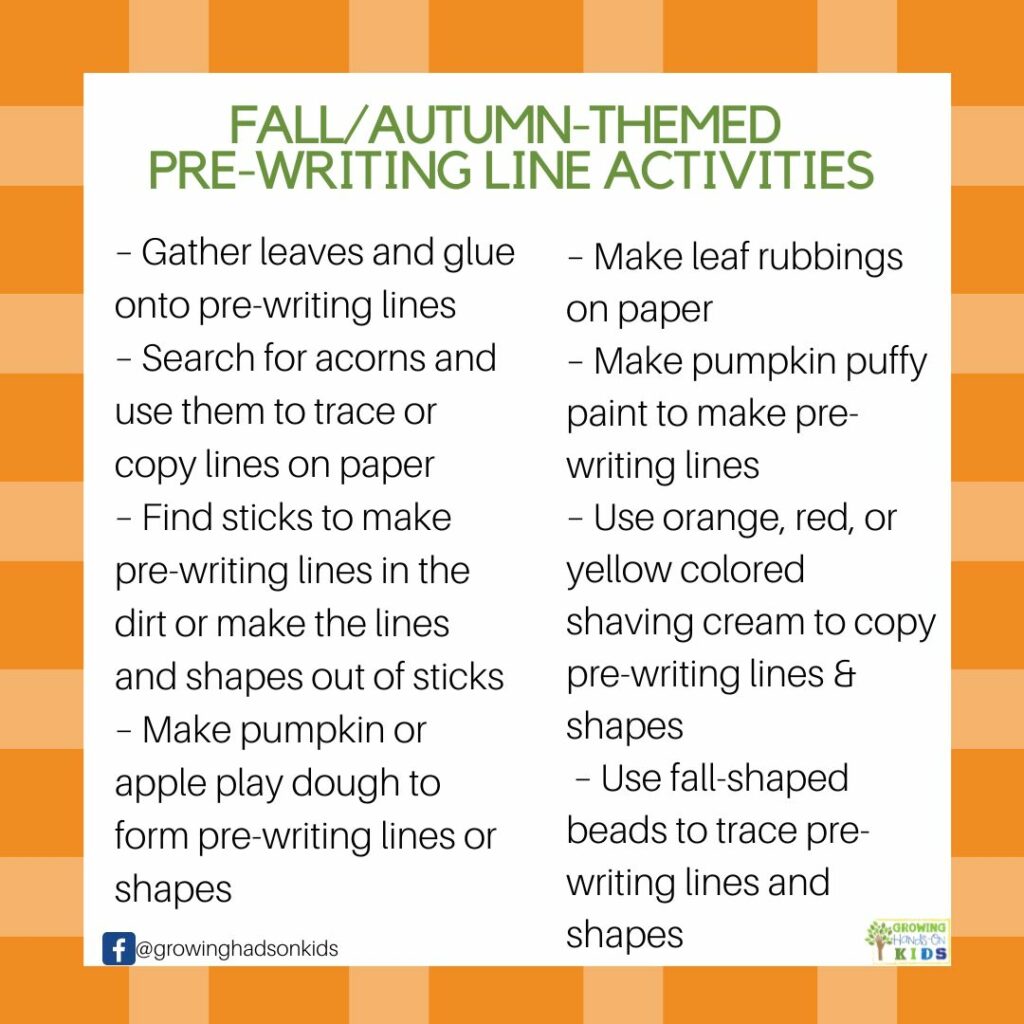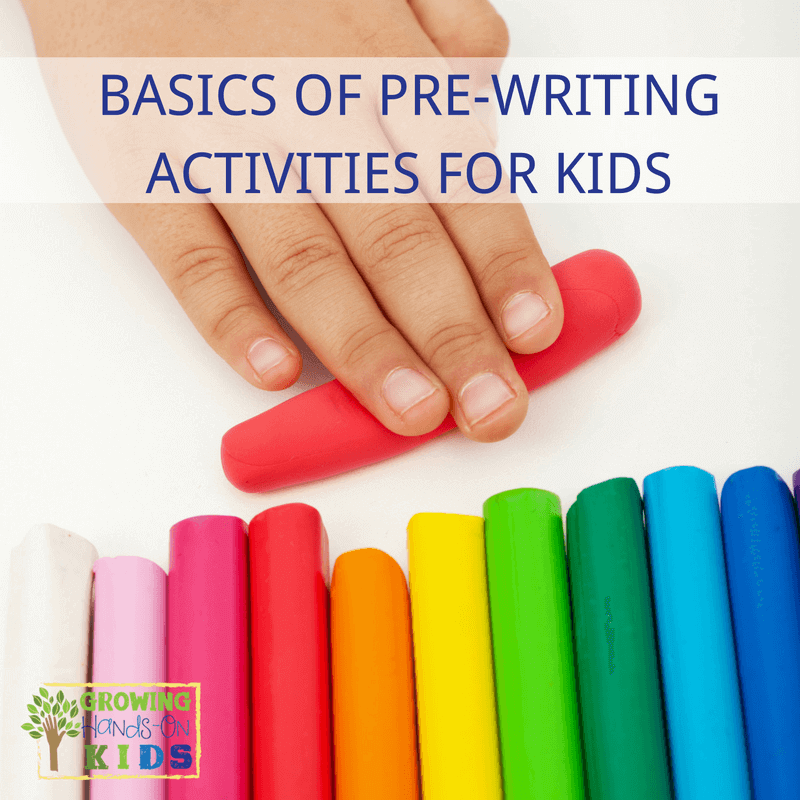12 Fall-Themed Pre-Writing Activities for Kids
Affiliate and Referral links are used below to promote products I love and recommend. I receive a commission on any purchases made through these links. Please see my disclosure policy for more details. As an Amazon Associate, I earn from qualifying purchases.
Fall/Autumn is a great time to work on pre-writing lines, strokes, and shapes in a novel way that kids will enjoy and have fun with. Here are some of my favorite fall pre-writing activities for kids of all ages.
Autumn Pre-Writing Activity Ideas for Kids
Any of these activities can be adapted to add practicing letters, numbers, or first and last names.
1 || Use leaves to form pre-writing lines
Colleen at The OT Toolbox has a great post using leaves to make pre-writing lines with samples and directions here.
2 || Search for acorns and use them to form or trace pre-writing lines
3 || Find sticks to make pre-writing lines in the dirt OR make the lines and shapes out of sticks
4 || Make pumpkin or apple play dough to form pre-writing lines or shapes
You can find some recipes for those here:
5 || Use orange, yellow, or red colored salt trays to trace pre-writing lines
You can find directions on how to dye salt with these directions from Mother Could. Once it has dried, dump it into a thin tray or cookie sheet and have your child copy pre-writing lines and shapes with their finger or a cotton swab.
6 || Trace or make leaf rubbings
While this activity does not make the actual lines or shapes, it is a good activity to build fine motor skills for pre-writing lines.
7 || Use a fall/autumn-themed pre-writing practice sheets to practice pre-writing lines
I just happen to have a pumpkin-themed pre-writing and scissor practice activity packet that you can grab here. 😉
8 || Make pumpkin puffy paint to make pre-writing lines
You can find the recipe and directions for pumpkin puffy paint in this post by The Chaos And The Clutter.
9 || Orange, yellow, or red-colored squishy bags to trace pre-writing lines and shapes
Use resealable bags, flour, water, and food coloring to make these colorful squishy bags. You can have children copy the pre-writing line by using their fingers to make the lines and shapes on top of the bag. For added pincer grasp practice, have them use a cotton swab to make the lines and shapes.
10 || Use orange, red, or yellow colored shaving cream to copy pre-writing lines and shape
All you need is shaving cream and some food coloring. Have your child wear disposable gloves if you don't want their finger to turn colors. 🙂
11 || Use fall-shaped beads to trace pre-writing lines and shapes
Here are some ideas of the types of beads to use. Do not use these with children under 3 who may still put things in their mouths.
12 || Use orange, red, or yellow tape to make pre-writing lines on a window or mirror
Here is how Dyan from And Next Comes L did tape letters like this. You can simply adapt it to autumn colors for the tape and do pre-writing lines instead of letters.
What are Pre-Writing Lines?
Pre-writing lines and shapes are strokes that children learn before learning how to write their names or words. They develop in a sequence starting at around 2 years old to 5-6 years old. You can read more about pre-writing line development here.
- Vertical Line – (Age 2 imitates, age 3 copies/masters)
- Horizontal Line – (Age 2 1/2 imitates, age 3 copies/masters)
- Circle Shape – (Age 2 1/2 imitates, 3 copies/masters)
- Cross Shape (+) – (Age 3 1/2 imitates, age 4 copies)
- Square Shape – (Age 4)
- Right/Left Diagonal Line – (Age 4 1/2)
- X Shape – (Age 5)
- Triangle (Age 5)
Before expecting children to write, it's important to ensure they have mastered pre-writing lines and shapes. This will help ensure a smooth transition to writing and also help build fine motor and visual motor skills in order to write.
I also have a pre-writing line development checklist that you can grab here.
You May Also Like:

Heather Greutman, COTA
Heather Greutman is a Certified Occupational Therapy Assistant with experience in school-based OT services for preschool through high school. She uses her background to share child development tips, tools, and strategies for parents, educators, and therapists. She is the author of many ebooks including The Basics of Fine Motor Skills, and Basics of Pre-Writing Skills, and co-author of Sensory Processing Explained: A Handbook for Parents and Educators.



